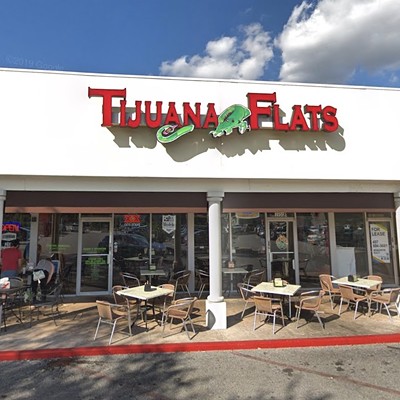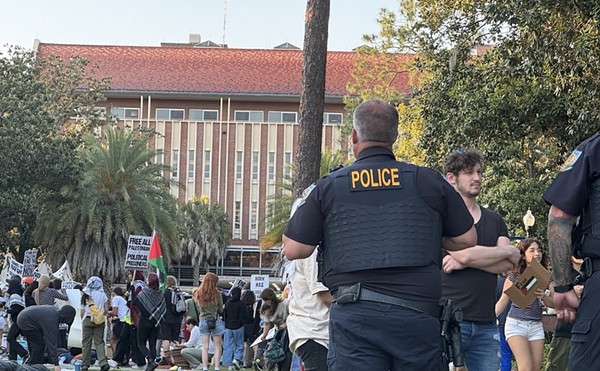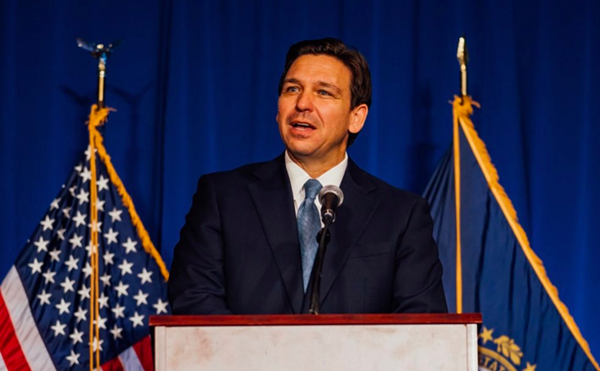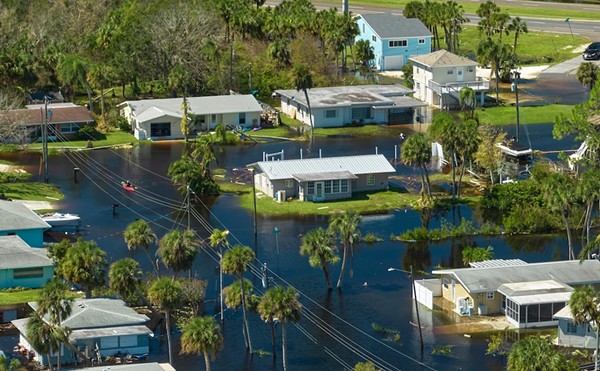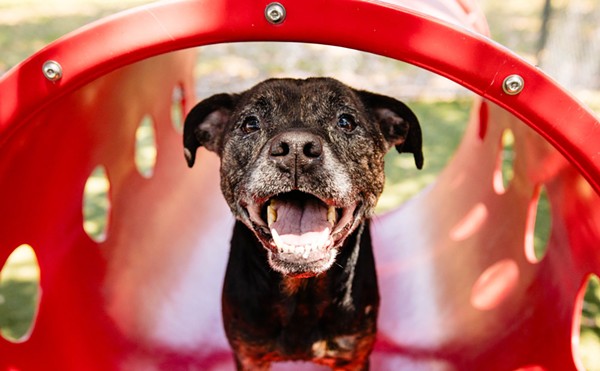It was two years ago that Dr. Marianne Berwick, an epidemiologist at New York's Memorial Sloan-Kettering Cancer Center, dropped the bomb. The fallout has not stopped since.
There is no correlation between sunscreen use and the prevention of skin cancer, she told the 1998 meeting of the American Association for the Advancement of Sciences. Neither does she believe that sunburn causes melanoma -- the deadliest form of the disease -- a claim that counters traditional thought.
To the drop-jawed gathering, Berwick also reported that chronic sun exposure likely protects against the development of melanoma -- due, she said, to the skin-thickening effect of tanning. She also pointed to a newly discovered, natural defense mechanism called apoptosis, which kicks in to kill sun-damaged cells that are on an irreversible path to cancer.
"Some studies I reviewed even found a greater risk for melanoma among people who used sunscreen," she says, although she concedes it may be that people already at risk for the genetically linked disease use sunscreen to justify longer stays in the sun.
"The problem," she says, "is that studies have not been designed to determine whether sunscreens are preventing skin cancer."
Indeed, after a 20-year education blitz by the American Cancer Society and dermatologists to convince sun worshippers to reach for sunscreens, some are now second-guessing that advice.
Other investigators say the exact relationship between sun exposure, sunscreen and skin is difficult to quantify in labs. Consider that just one skin cell has more than 1 billion units of DNA. Naked DNA sitting in a sunscreen solution in a lab, basking beneath a sun lamp, may mutate and thus be easily identified by a researcher. Then again, if you sit in the sun for an hour with no sunscreen, then have an eraserhead-size piece of skin snipped for biopsy, it's likely that a damaged cell destined for skin cancer will be overlooked.
"Still," Berwick says, "there are no hard data that identify what triggers the disease. Early- or late-life sun exposure? Sunburn? Genetics? Certainly exposure is important, but we don't know the latency. We don't know which is most important."
Before pitching your potions, however, know this: The American Academy of Dermatology (AAD) ravages Berwick's report and says the confusion she has created about the effectiveness and safety of sunscreens could have dire health consequences. Their rebuttal includes:
• statistics that suggest if just 10 percent of the population stopped using sunscreen, an additional 1 million cases of skin cancer will occur among them in the next 10 years; if parents quit slathering it on their kids, that figure will increase by tens of millions in the next two decades;
• criticism of Berwick's interchangeable use of the terms "skin cancer" -- which is inclusive of all forms of the disease -- and "melanoma," which is a specific form; and
• excerpts from myriad, well-documented studies that support views opposite of Berwick's.
"I don't have anything to say to refute what she says about sunscreen and melanoma," says Dr. Christopher P. Crotty, of the Sand Lake Dermatology Center, who specializes in adult and pediatric diseases of skin, hair and nails. "However, Dr. Berwick's report, while interesting, is disturbing and has created fear and setbacks among our patients regarding the use of sunscreens. We dermatologists strongly believe they do have a positive impact in preventing cancers, and object to her message that using them is a waste of time."
Especially, he says, since our bodies -- over time and with a lot of exposure -- experience a sea change in their innate ability to protect us against skin cancer. Something happens to that immune response to diminish it, creating one more reason to shield ourselves. "Practically, we do see that over a long period of time, sunscreen, properly used, clearly reduces skin cancers."
Not widely appreciated, he says, is the amount of sunscreen that needs to be applied for effective protection. A single, adequate application will use one ounce. Think of a jiggerful.
Crotty, like the AAD and other rank-and-file members of the medical community, point to Berwick's methodology as one reason for the public to suspect her findings. She cited studies that were conducted prior to the existence of broad-spectrum sunscreens; the studies were not double blind; they did not consider critical, relevant issues.
Still, Crotty says, he applauds Berwick for giving people something to think about. "Right now, we are waiting to see what sticks," he says. "Unfortunately, there is a delay factor in finding out things. That's science -- two steps forward, one step back, until we find what works."
Berwick's conclusion also distressed Dr. Alfredo E. Gonzalez, a Winter Park dermatologist who specializes in skin cancer. Before abandoning sunscreen use, he warns, people should know "it can take a couple of decades of sun exposure before skin cancer shows up, and patients she studied had only limited sunscreen use."
Like Crotty, he agrees that individual habits are major factors in determining skin-cancer risk: People who get sporadic sun exposure in youth tend to maintain that pattern as adults and, as a result, are more likely to get skin cancer, particularly melanoma. "The key to how our skin responds to such exposure is determined totally by genetics and our amount of melanin -- the naturally occurring pigment that gives color to our skin and hair," he says.
There are six types of skin, from Type One -- very fair, never tans, always burns, at high risk for all kinds of skin cancer -- to Type Six, which is black or very dark, always tans, never burns, at lower risk for skin cancer. Everyone else falls in between. The darkness of our skin is determined by our number of melanocites -- the cells that make melanin. African Americans have a high concentration of such cells per centimeter; Scandinavians don't have many. Melanoma is cancer that arises in these cells, usually in the form of a mole.
Gonzalez says Berwick's statement that tanning thickens and protects our skin is misleading. "Sun exposure causes the deeper layer of our skin to thicken, but the upper part, where the development of skin cancer takes place, actually gets thinner and so, more prone `to cancer`. A tan is simply concentrated melanin, produced in response to damage by ultraviolet light."
In people who tan, it seems that slow, small amounts of sun, in little bits of time, may create a degree of protective resistance with melanin. In pale people, melanin just makes freckles and moles. "The worst thing for skin is to live indoors all the time, work indoors for 12 hours, drive home in your car or subway, then take a vacation to Jamaica and get a huge amount of sun," says Gonzalez (and Berwick agrees). "The person who does that three or four times is prime for melanoma." Conversely, people who work outdoors -- farmers, sailors, construction workers -- are more at risk for squamous and basal cell carcinomas.
Carcinoma simply means cancer that originates in the skin or in tissues that line or cover internal organs. Squamous cells are flat and look like fish scales; they cover the external and internal surfaces of your body. Basal cells are small and round and located in the base of the outer layer of your skin.
While melanoma is the most lethal and feared skin cancer because of its ability to metastasize -- that is, spread from one part of your body to another and kill you in just months -- squamous cell carcinoma also can metastasize. Basal cell carcinoma, the most common skin cancer, does not have the ability to spread.
Fair-skinned folks, always at high risk for all types of skin cancers, have a greatly enhanced risk if they grow up with a lot of sun exposure, then go into hiding only to come out again for vacation. Regardless of how much sunscreen they use, it is not going to help. Their only protection is avoidance. "There were a lot of those category of people involved in Berwick's study," says Gonzalez, "so the study is ... not a representative sample."
Though he can't refute Berwick's conclusion that sunscreens do not specifically prevent melanoma, Gonzalez says many studies do show the protective effect of sunscreens against skin cancers.
Ultraviolet radiation is part of the sun's energy. It hits Earth's surface with two kinds of rays: Ultraviolet A (UVA) and Ultraviolet B (UVB). The longer, less strong UVA ray penetrates deeply into your skin and, over time, causes DNA damage and premature aging. The shorter, stronger UVB rays cause a quicker reaction, are more likely to cause sunburn and, it is suspected, trigger melanoma. Hence, the medical advice to use a broad-spectrum sunscreen with ingredients that block both forms of radiation.
About those ingredients:
Added to the debate is the theory that chemical ingredients in sunscreens are inflicting damage. Studies at the University of Oxford in England point to reports that suggest several of those ingredients destroy DNA. After the chemical Benzophone was found to form bad-boy, cell-damaging molecules when exposed to ultraviolet light, it was globally banned from sunscreen formulations -- except in the U.S., where some scientists say they have been unable to duplicate the deleterious findings.
Frank Gasparo is a research professor in dermatology at Thomas Jefferson University in Philadelphia. "We have known there was an association between the sun and skin cancers and early skin aging for 40 years," he says. "At first, we thought maybe the cause was sunburn. Back in the 1960s, when sunscreens were thought of, we were searching for chemicals that would prevent sunburn. The first we came up with was PABA" -- later removed from some sunscreens when it proved to be allergenic.
By the mid 1980s, however, it was evident something else was amiss: While people who wore sun products with the then-highest Sun Protection Factor (SPF) of 15 were not getting sunburns, they still developed photo-aging and skin cancers. It became clear that UVA waves were still getting through; therefore, the quest for broad-spectrum protection began.
"We have millions of chemicals in the world," says Gasparo. "Yet the search for new ones that give full-spectrum protection has not been that productive. There are basically only three on the market that work: zinc oxide and titanium dioxide and the chemical UV-block avodenzone -- known as Parsol 1789."
Discovering a safe, protective chemical requires a testing process costly in money, time and effort. The sunscreen-products industry prefers to retrofit, adding bells and whistles to old products, says Gasparo, who is a sometime consultant to that industry. "Often, though," he says, "you can't take an old machine and make it modern. Some early sunscreen ingredients were carcinogenic. Benzophone -- known for 20 years to generate free radicals -- is still in use in the U.S., a favorite, because it absorbs both UVA and UVB waves."
Conversely, zinc oxide and titanium dioxide occur naturally in the earth. They are neither allergenic nor carcinogenic. They are opaque and, when applied to the skin as sunscreen, act like paint on a house by totally blocking, reflecting and scattering UV waves.
So, why aren't they the public's sunscreen of choice? Because, says Gasparo, most people are reluctant to spread it on their skin; they consider it cosmetically unappealing -- the unappealing aspects of skin cancer notwithstanding. (And if you still use oils, you will want to know that oil makes your skin more transparent, exposes your underlying cells to radiation and makes them much more susceptible to skin cancers.)
In response to the public's vanity, the sunscreen industry decided to alter zinc and titanium pigments, in an effort to mix and blend it with existing formulations. Unfortunately, says Gasparo, that "changes their highly protective ability, although they can be blended to some degree, and sunscreens that include even `diluted` versions are better than those that do not."
Still, Gasparo, who recommends sunscreen, concedes this about the chemicals: "We do not know what happens to them after they are applied to the skin. They certainly don't fall off. Some may wash off. Historically, it was assumed that they did not penetrate the skin; now, data says they are absorbed, then excreted."
The question is what, if any, havoc do they wreak during their trip?
Crotty says that even though "all that stuff doesn't just evaporate ... sunscreens absolutely reduce the risk of squamous cell cancer. Until we know without question that the chemicals now used are carcinogenic, I'm going to stick with them."
Gonzalez, who also urges sunscreen use, says of the ingredients: "I would not take a stand on the issue today. I keep reading and studying." Adding to the burden of finding safe chemicals, he says, is the fact that pharmaceutical companies dump vast sums of money into university medical schools to buy research. "They do anything to get a drug approved," he says, skeptically. "They pay enough money and eventually release approval with a big-name researcher attached."
For now, then, Crotty, Gonzalez and Gasparo agree that zinc oxide, titanium dioxide and Parsol 1789 are the only substances that block UV waves, and that zinc and titanium are the best choices.
In the near future, options for protection may not be limited to potions that one smears on the body.
An outfit called Ciba Specialty Chemicals has two new products in the wings that they expect will become the rage in sun protection. With decidedly unglamorous names, FD and FR -- fabric detergent and fabric rinse, respectively -- are laundry products purported to behave as comprehensive UV absorbers. The magic ingredient is called Tinosorb, and Ciba's production specialist Mike Cheek says the stuff works through its affinity for fabrics when it's added to wash-and-rinse cycles.
"Tinosorb does not go directly onto skin but into fabric. It will help keep UV energy from passing through cloth," he says.
Tinosorb's effect is supposed to be cumulative. The more you wash and rinse your clothes with products that contain the chemical, the greater the protection. In answer to some cynical chemists, Cheek assures that, "Yes, Tinosorb holds up in wet garments." That should be good news to tender-breasted, wet-T-shirt contestants and other beach birds, because wet clothes still allow UV waves to pass through.
The chemical family that spawned Tinosorb is the same used in detergents as whiteners, and so has been tested for skin sensitization and irritation. Although the formula already has received the Skin Cancer Foundation seal of recommendation, it has yet to be incorporated into over-the-counter products.
Cheek says that's because major laundry producers don't want to spend money to raise awareness. "They don't want to risk an existing brand in the event that this isn't a successful endeavor, and they don't want to change the perception that consumers have of laundry products, which does not include UV protection," he says.Ciba is working with two small regional detergent manufacturers to introduce Tinosorb and expects limited distribution by November.
How does the idea strike Gasparo? "Whether everyday clothing is lightweight, beefier, wet or dry, light gets through. I think Tinosorb borders on the gimmicky side," he grouses.
Berwick isn't exactly backing down.
(Incidentally, while conceding that an increase in skin cancers is inevitable because of the diminishing layer of protective ozone, she adds that one source definitely not responsible is fluorescent lighting. "That is utter nonsense," she says of the urban myth that periodically surfaces in the media. "The only association is that people who work indoors all the time `and` then go out on weekends and get intense sun exposure are at high risk of developing skin cancer." )
But a seemingly mixed message still gives rise to confusion, even as Berwick's conclusions remain a topic of debate.
On one hand, she says, "My opinions have not changed since I gave that talk, which certainly continues to cause a lot of controversy. There were no conclusive studies then that supported the idea that sunscreens will prevent skin cancer, and there still aren't. ... I do not recommend sunscreens. I recommend common sense and caution ... and avoid using sunscreens as an excuse to stay out in the sun too long."
On the other hand, she's not above trying to repair a broken bridge, as evidenced by a letter she wrote to the fuming academy of dermatologists, in which she states, "Like you, I strongly agree that sunscreen is an excellent component of a good sun protection program."
Component. But not, to her at least, the answer.


